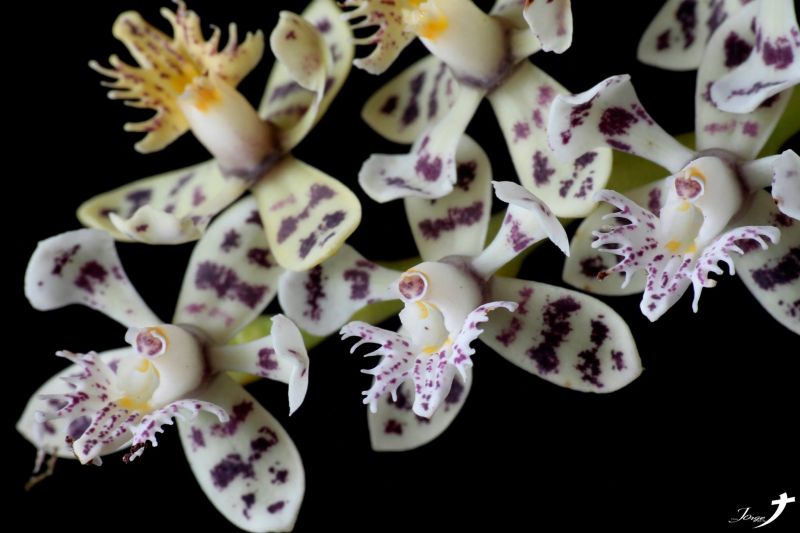

Epidendrum philowercklei Hágsater & E.Santiago 2006 GROUP Neowilliamsia
Drawing by © Hno Jorge de la Cruz and his Facebook Website
TYPE Drawing by © Eric Hagsater and The AMO Herbario Website

 MID
MID  EARLY
EARLY 
Common Name The Similar to E wercklei's Epidendrum
Flower Size .6" [1.5 cm]
Found straddling the borders of Costa Rica and Panama in high montane forests at elevations of 2200 meters as a small to medium sized, cold growing epiphyte with simple, canelike, basally terete, laterally compressed above, thin, erect, straight, arising from the lower internodes of the prevous stem and basally enveloped by tubular, non foliaceous sheaths and carrying 3 to 6, distributed towards the apex of the stem, suberect, alternate, articulate, coriaceous, oblong-lanceolate, acute, minutely apiculate, margin entire leaves that blooms in the mid fall through early spring on a terminal, erect, paniculate, occuring only once, peduncle, laterally compressed, ancipitose, straight, provided at the middle with a single, tubular basally, ancipitose, conduplicate towards the apex, acute bracts, rachis fractiflex and ancipitose, 2.8 to 8.8" [7 to 22 cm] long, simultaneously many flowered inflorescence with shorter than the ovary, deltoid, acute, ancipitose floral bracts and carrying non-resupinate flowers.
"Epidendrum philowercklei belongs to the GROUP Neowilliamsia , characterized by the ancipitose stems and rachis, the rachls with conduplicate, acute bracts, usually non-resupinate flowers, the lip often digitate and the 2 to 4 pollinia with 2 hard, laminar, caudides. The species is recognized by the taller plants with a paniculate inflorescence, the flowers marked with red-orown transverse bars over yellow-ochre floral segments, and especially the straight, entire clinandrium-hood and the very wide somewhat oblique opening formed by the column and lip, with the nectary widely rounded at the height of the perianth; the lip has finger-like divisions, and the petals are cuneate-spatulate. It has been confused with E. wercklei which has a similarly divided lip, with finger-like divisions, but the flowers are white or cream green, sparse, with dark purple brown spots, a longer, straight clinandrium-hood, , the column-lip forming a verticaly narrower opening, and forming a narrow, rounded nectary. It hybridizes naturally with Epidendrum dwyeri Hágsater which is recognized by the ochre brown-barred sepals and petals, small subentire white lip, and especially the very cuneate and vertically narrow column, which leaves only a small opening in front, and a narrow, acute nectary." Hagsater etal 2006
Synonyms
References W3 Tropicos, Kew Monocot list , IPNI ; * Icones Orchidacearum 8 Plate 870 Hagsater & Sanchez 2006 drawing fide; Icones Orchidacearum Vol 9 Plate 904 Hagsater & Sanchez 2007 see recognition section; Icones Orchidacearum 9 Plate 929 Hagsater 2007 see recognition section; Icones Orchidacearum 9 Plate 989 Hagsater 2007 see recognition section; Icones Orchidacearum 9 Plate 1000 Hagsater 2007 see recognition section;
--------------------------------------------------------------------------------------------------------------------------